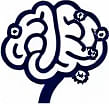The Flywheel Effect in Mental Models
 by Marlene Keeling
by Marlene Keeling
The Flywheel Effect represents a powerful mental model for achieving sustained growth through consistent actions. By focusing on building momentum, individuals and organizations can create self-reinforcing cycles that lead to long-term success in business and personal development. Explore its applications here.

The Flywheel Effect is a concept that illustrates how repeated efforts can generate increasing momentum over time. In essence, it shows how initial pushes lead to faster spins, creating a cycle where progress feeds on itself.
To start, consider the basic idea. Flywheel Effect originates from physics, where a heavy wheel requires significant force to begin moving but eventually spins with less effort once it gains speed. This principle applies to various fields, helping people see how small, consistent actions can compound into major results.
In business, this model offers a way to think about growth strategies. Companies often face challenges in the early stages, but by pushing on key areas like product development or customer service, they can build speed. For instance, a startup might invest in improving its core offerings, leading to better customer satisfaction and more referrals. This creates a loop where success in one area boosts others, making the process more efficient.
Turning to psychology, the Flywheel Effect can influence personal habits and cognitive patterns. Individuals seeking change might struggle at first with new routines, such as exercise or learning skills. Yet, through persistence, these habits gain momentum, becoming easier to maintain. Psychologists note that this aligns with ideas of behavioral reinforcement, where positive outcomes encourage further action.
Practical examples bring this to life. Take a professional aiming for career advancement. They begin by setting daily goals, like networking or skill-building. Over time, these efforts accumulate, leading to opportunities that reinforce the initial work. In cognitive development, learners can apply the model by focusing on gradual knowledge acquisition. Regular study sessions build a foundation that makes complex topics more accessible, turning initial effort into ongoing progress.
One key benefit is the reduction in perceived effort. As the flywheel spins faster, what once felt laborious becomes routine. This is particularly useful in strategies for lifelong learning, where maintaining curiosity requires steady input.
How to Apply the Flywheel Effect
Implementing this model involves a few straightforward steps. First, identify core activities that drive your goals. Whether in business or personal life, prioritize actions with the greatest impact. For example, a team leader might focus on employee training, which improves performance and leads to better outcomes.
Next, commit to consistency. Unlike quick fixes, the Flywheel Effect relies on steady application. Track progress to see how small wins add up, fostering a sense of achievement that propels further action.
In cognitive terms, this means integrating the model into daily thinking. People interested in mental models can use it to reframe challenges, viewing setbacks as temporary rather than permanent. By doing so, they maintain motivation and avoid discouragement.
Challenges may arise, such as external disruptions that slow the wheel. In these cases, returning to the basics—reapplying initial pushes—helps regain speed. Businesses might face market shifts, while individuals deal with life changes, but the core principle remains: persistence pays off.
From a broader perspective, the Flywheel Effect intersects with other mental models in cognitive development. It complements ideas like feedback loops, where outcomes inform future decisions. By combining these, individuals can create more effective strategies for growth.
In education, teachers can use this concept to encourage students. Instead of emphasizing immediate results, they highlight how consistent effort leads to deeper understanding and skills. This approach supports long-term learning, making it a valuable tool for educators and learners alike.
Ultimately, the Flywheel Effect serves as a reminder that transformation comes from sustained action. Whether building a company or developing personal capabilities, it offers a framework for creating lasting change. By embracing this idea, curious minds can approach challenges with greater confidence and clarity.
To wrap up, integrating the Flywheel Effect into your thinking can transform how you pursue goals. It turns the abstract into the actionable, providing a practical path to success in various areas of life.
